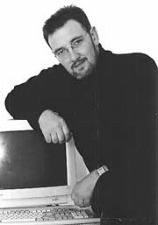Is technology making life easier?
By Rick Castellini
Special to PRIME
I just returned from the Consumer Electronic Show (CES) in Las Vegas, Nevada.
Many people ask me what was the best thing I saw while at CES. In all honesty, the theme that emerged for me was how complex technology has made something as simple as watching TV. I saw remote controls with 90 buttons and needed to be programmed through a computer. I saw TVs that required a structural engineer to install and an electrical engineer to wire properly. I also saw computers that contain literally 20 times the power of computers on the market just 10 years ago, yet ran at one-half the speed of those older computers because of bloated software (cough, Vista).
Yet despite being generally disillusioned with the state of technology innovation, a few products stood out at CES and passed the "Rick's practical and easy to use" litmus test.
The Eee PC
I traveled to Las Vegas with one of the hottest technologies shown there, the ASUS Eee PC. If you haven't seen this little marvel yet, head over to my web site and search for "Eee PC." This laptop has introduced a whole new level of portability and ease of use to the computer world. It weighs in at less than two pounds, has a three-hour-plus battery life, does not require extensive security maintenance and boots up and shuts down in less than 40 seconds.
The Eee PC isn't for everyone, however. It runs a special version of Linux, an alternative to windows and has only a seven inch screen. Experienced users will enjoy the Eee PC more so than beginners, but the technologies that it introduced are already spilling over into other products. Linux is starting to make real gains into the computer world and becoming a viable alternative to Windows and Apple. Smaller, simpler, less expensive computers and laptops are also showing up on store shelves as a partial result of the success of the Eee PC.
WiMax arrives
Another technology that I've been following for three or four years seems to be coming to the market finally this year. That technology is WiMax.
WiMax is a wireless Internet technology that allows more cost-effective and wider-reaching broadband Internet access. One WiMax tower can provide up to 10 megabit per second (cable speeds) access to an area covering nearly 20 miles in diameter.
Sprint, Intel, and ASUS are the major backers of this technology that promises to cover nearly 100 million American residents by the end of 2008. Starting in May, Sprint will start the service they dubbed Xohm in Chicago, Baltimore, and Washington D.C. Sprint plans on pricing Xohm service "very competitively" and computers with built-in WiMax receivers will be hitting the streets by the second quarter as well.
Other show standouts
A few other products also caught my attention while at CES this year, including the Eye-fi SD card for digital cameras, Zoho Online Office, and a new backup technology called Drobo.
To read more about these technologies and others, visit my web site at HelpMeRick.com to see my full CES report with pictures, videos, and links to these and other companies and technologies.
Tech companies need to change
Overall, I think the technology industry needs to do a much better job at simplifying our gadgets across the board while at the same time making them more reliable. Constant upgrades with fluff features, in my opinion, wastes time and money and insult the tech consumer's judgment about quality. All the technology buyers I talk to want solid products with a good feature set that are easy to access and will last more than a year. I'm hoping that we will start to see more of these types of products in the future.
Rick Castellini is an author, computer consultant, and hosts a nationally syndicated computer radio show from Colorado. Visit his web site at www.HelpMeRick.com for new tips every week and sign up for his free weekly email newsletter.
